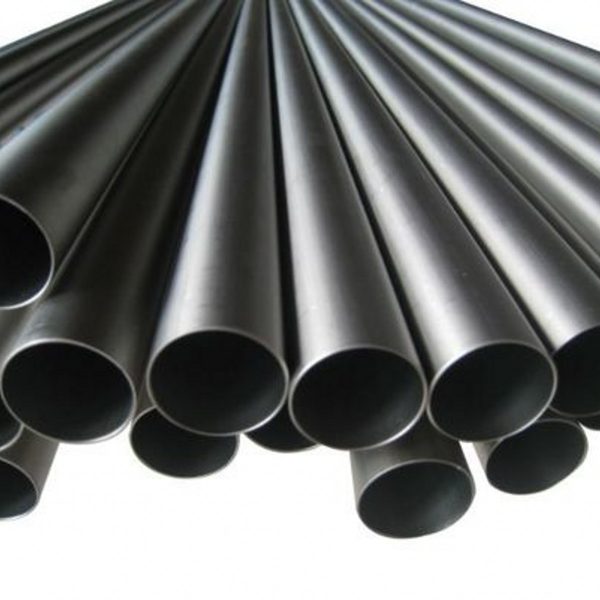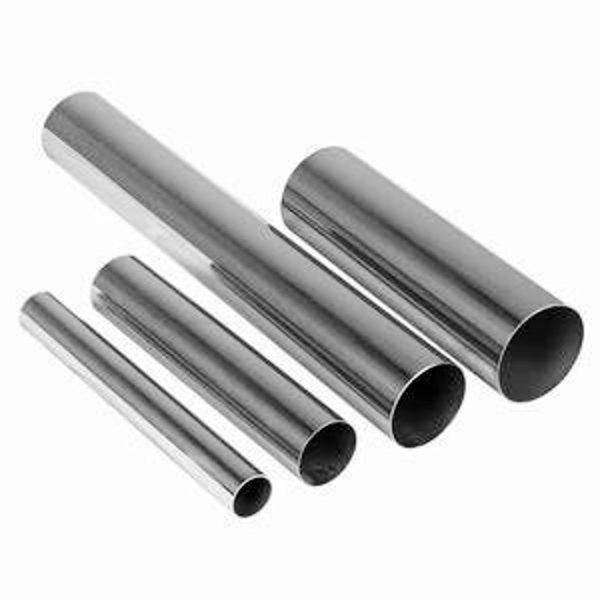410S Stainless Steel Pipe/SS410S Tubing
Holic® offers 410S Stainless Steel Pipes and Tubes of ASTM A240.
Grade 410S stainless steels are general-purpose martensitic stainless steels containing 11.5% chromium, which provide good corrosion resistance properties. However, the corrosion resistance of grade 410S steels can be further enhanced by a series of processes such as hardening, tempering and polishing. Quenching and tempering can harden grade 410S steels. They are generally used for applications involving mild corrosion, heat resistance and high strength.
Alloy 410S stainless steel is resistant to atmospheric conditions, water and some chemicals. It can be used in environments containing weak or diluted acetic acid, naptha, nitric acid and sulfuric acid. The alloy is also resistant to acids contained in foods. 410S stainless steel can also be used in slightly chlorinated and desaereted water. It performs well in oil and gas applications where desaereted and low hydrogen sulfide exist. However, the alloy is prone to chloride attack, particularly in oxidizing conditions.
Alloy 410S stainless steel is the general purpose 12% chromium martensitic stainless steel that can be heat treated to obtain a wide range of mechanical properties. 410 stainless steel possesses high strength and hardness coupled with good corrosion resistance. Alloy 410S stainless steel is ductile and can be formed. It is magnetic in all conditions.
Item Name: 410S Stainless Steel Pipe.
Brand: HOLIC®.
Standard: ASTM A240
Product Description
Type 410S Stainless Steel Pipe Factory:
Holic Oil Pipeline Co., LTD.
Type 410S Stainless Steel Pipe Basics:
Grade 410S stainless steels are general-purpose martensitic stainless steels containing 11.5% chromium, which provide good corrosion resistance properties. However, the corrosion resistance of grade 410S steels can be further enhanced by a series of processes such as hardening, tempering and polishing. Quenching and tempering can harden grade 410S steels. They are generally used for applications involving mild corrosion, heat resistance and high strength.
Alloy 410S stainless steel is resistant to atmospheric conditions, water and some chemicals. It can be used in environments containing weak or diluted acetic acid, naptha, nitric acid and sulfuric acid. The alloy is also resistant to acids contained in foods. 410S stainless steel can also be used in slightly chlorinated and desaereted water. It performs well in oil and gas applications where desaereted and low hydrogen sulfide exist. However, the alloy is prone to chloride attack, particularly in oxidizing conditions.
Alloy 410S stainless steel is the general purpose 12% chromium martensitic stainless steel that can be heat treated to obtain a wide range of mechanical properties. 410 stainless steel possesses high strength and hardness coupled with good corrosion resistance. Alloy 410S stainless steel is ductile and can be formed. It is magnetic in all conditions.
Applications
- Aerospace – piston engine manifolds
- Chemical Processing
- Expansion Joints
- Food Processing – equipment and storage
- Petroleum Refining – polythionic acid service
- Waste Treatment – thermal oxidizers
Benefits
- Higher creep stress and rupture properties when compared with 304
- Ideal for high temperature service
- Overcomes sensitization and intergranular corrosion concerns
- Can be used in elevated temperature applications for ASME Boiler and Pressure Vessel Code applications
- Excellent mechanical properties
Item Name: 410S Stainless Steel Pipe.
What is Stainless Steel Pipe?
Stainless steel refers to the alloy steel which can resist the corrosion of weak corrosive medium such as air, steam, water and chemical corrosive medium such as acid, alkali and salt. The corrosion resistance of stainless steel depends on the alloy elements contained in the steel. The basic alloy elements of stainless steel include nickel, molybdenum, titanium, niobium, copper, nitrogen, etc.
Stainless steel belongs to alloy steel, a kind of high alloy steel, which contains a lot of chromium, enough nickel and a certain amount of titanium. The role of chromium is to make the steel corrosion resistant, and the role of nickel is to reduce the austenitizing temperature of stainless steel. The total content of alloy elements can reach 10-28%, so it is a high alloy steel.
Advantages of stainless steel pipes
- Luster and Polishing surface
Our stainless steel is polished to ensure quality.
- Corrosion resistance
When the content of chromium atom in steel is not less than 12.5%, electrochemical corrosion can be prevented. Most stainless steel products are required to have good corrosion resistance, such as tableware, kitchen utensils, water heaters, water dispensers, etc. Some foreign buyers also test the corrosion resistance of the products.
- Excellent Solderability
Most of the finished products of stainless steel must have good weldability. Therefore, our stainless steel supplier can provide you with stainless steel with good weldability.
- Heat resistance
Stainless steel still has good physical and mechanical properties at high temperature.
Usage of stainless steel pipe
Although stainless steel pipes are higher cost to sources, according to its outstanding characteristics such as strength, anti rust, corrosion-resistance, stainless steel pipes have been applied in many industries and domains below
- Medical industry,
- Food and catering sector,
- Automotive and transportation industry,
- Construction and architecture domain,
- Energy and heavy industries.
Chemical Composition:
| Element | Type 410S |
| Carbon | 0.08 max. |
| Manganese | 1.00 max. |
| Sulfur | 0.030 max. |
| Phosphorus | 0.040 max. |
| Silicon | 1.00 max. |
| Chromium | 11.5 – 13.5 |
| Nickel | 0.60 max. |
Mechanical Properties: ASTM A240
| Type | Yield Strength 0.2% offset (KSI) | Tensile Strength (KSI) | % Elongation (2″ Gauge length) | Hardness Rockwell |
| 410S | 30 min. | 60 min. | 22 min. | HRB 89 |
Formability
410S Stainless Steel can be easily formed by drawing, spinning, bending and roll forming.
Weldability
This ferritic class of stainless steels is generally considered to be weldable by the common fusion and resistance techniques. Special consideration is required to avoid brittle weld fractures during fabrication by minimizing
discontinuities, maintaining low weld heat input, and occasionally warming the part somewhat before forming. This particular alloy is generally considered to have slightly poorer weldability than the most common alloy of the stainless class, Type 409. A major difference is addition of aluminum to control hardening, which results in the need for higher heat input to achieve penetration during arc welding. When a weld filler is required, AWS E/ER 309L or 430 filler material is most often specified. Type 410S is well known in reference literature and can be obtained in the following ways:
1. ANSI/AWS A5.9, A5.222, and A5.4 (filler metals, minimum UTS and elongation).
2. “Welding of Stainless Steels and Other Joining Methods,“ SSINA, (800:982-0355).
Heat Treatment
410S is not hardenable by heat treatment. It is annealed in the 1600 – 1650°F (871 – 899°C) range and then air cooled, mainly to relieve cold working strains. Care should be exercised to avoid exposure at temperatures of 2000°F (1093°C) or above because of possibleembrittling effects. If excessively large grains are found after annealing mildly cold-wor ked material, the annealing temperature should be decreased to the 1200 – 1350°F (649 – 732°C) range.
Our advantages:
As a leading brand of oil pipeline products in China, Holic® is working on providing high quality 410s Stainless Steel Pipes and Tubes with most competitive price.







